Keep Your Hands on the Cork
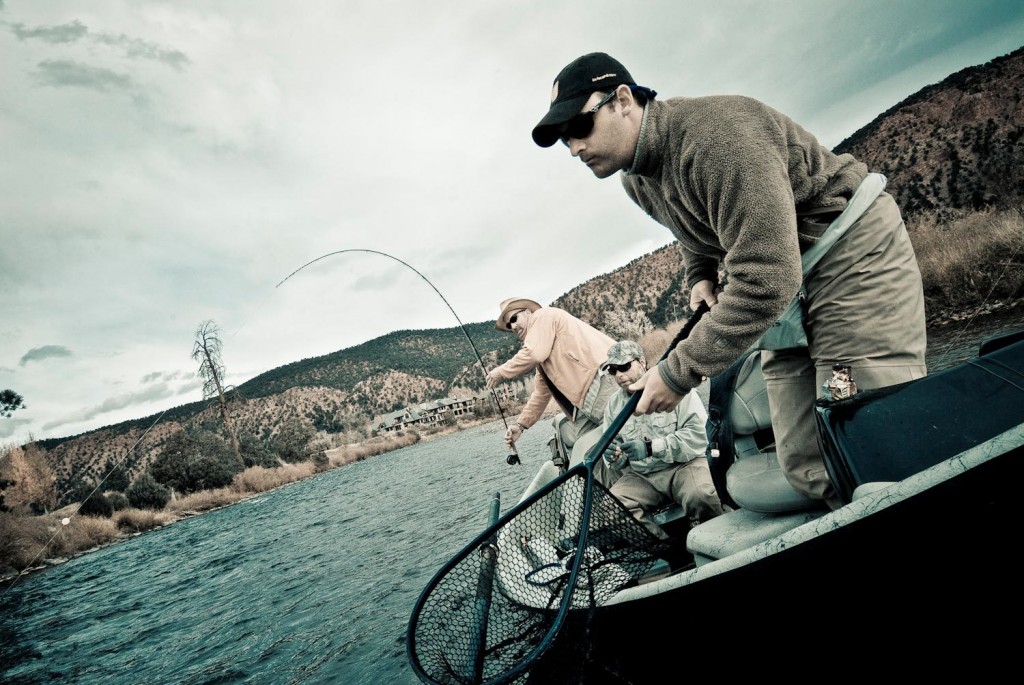
By Kent Klewein
Like so many others out there, I’ve broken my fair share of fly rods over the years.
I’ve slammed them in tailgates, stuck them in ceiling fans and I’ve squashed quite a few trying to get in and out of my cataraft to quickly. It took me awhile to figure it out, but I finally realized I was the problem, and I’ve since learned to slow down and not worry about being the first angler on the river all the time. It’s kinda funny how just slowing down a few steps and taking a couple extra minutes to get organized, keeps those negligible acts of snapping fly rods to a minimum.
One overlooked fly rod handling mistake I see all the time by fly anglers, is taking their hands off the cork during the final stages of the fight, and moving one hand high up on the butt section of the rod in the effort to get extra leverage to land the fish. You never want to do this, because when you do, you change the fulcrum point of the fly rod and eliminate the fly rods ability to use the strongest part of the rod, its butt section. This puts extra pressure on
Read More »Sunday Classic / Fly Fishing with Stealth – 8 Common Mistakes
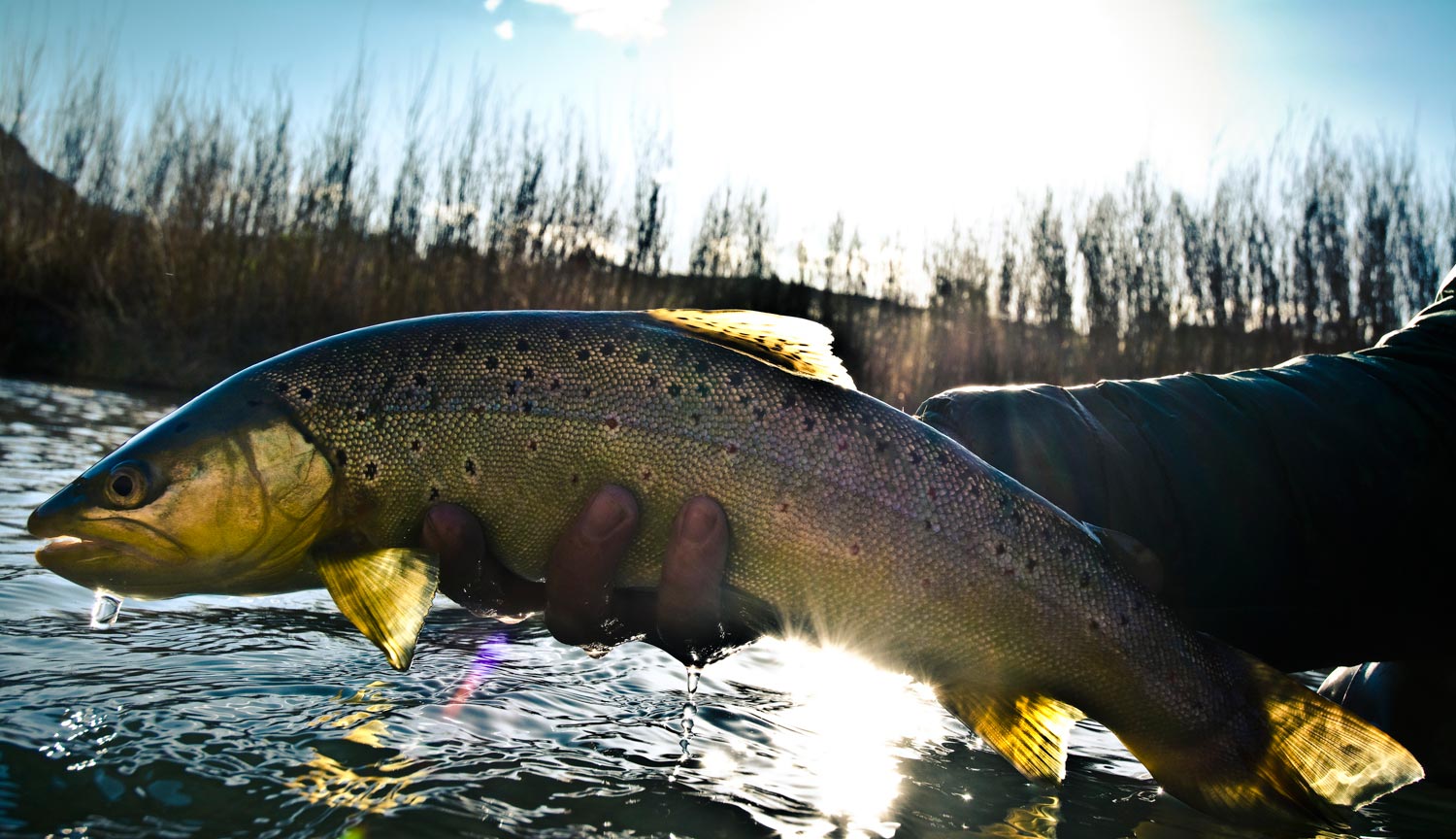
How often to you think anglers miss opportunities catching trout because of the lack of stealth? The more educated trout populations are in a stream, river or lake you’re fly fishing, the more important it is for fly anglers to mimic the way a hunter stalks game in the field. I estimate that I give away upwards of 50% of my trout catching opportunities due to my lack of stealth. Below are 8 common mistakes fly anglers make on the water that blow their cover and success.
Read More »Saturday Shoutout / Bob Larko
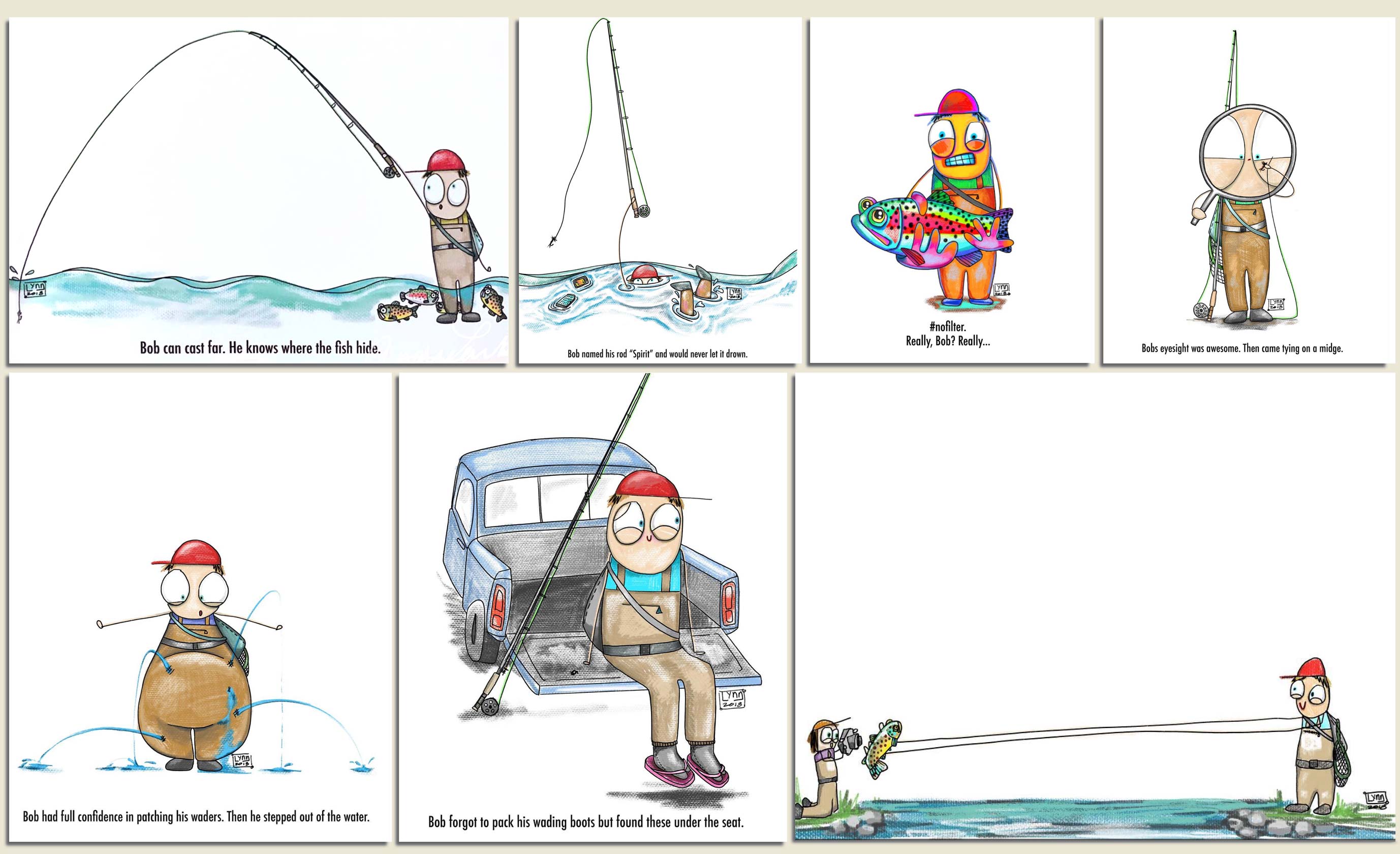
Andrea Larko is one of the most recognizable artists in fly-fishing.
Her unique vision is exciting and instantly identifiable. Her artwork has been licensed to the biggest brand names in fly fishing and has long been my personal favorite. If you are not familiar with Andrea’s work, you owe it to yourself to check it out.
Recently she started a new series of whimsical cartoons based on a character she named Bob. These fun, good natured cartoons sum up the wonder, blunder and frustration anyone who has picked up a fly rod will identify with. They are simply wonderful.
You can see more Bob Cartoons, as well as some wonderful art, on Andrea’s Instagram feed.
Visit her Etsy page to find art, apparel and accessories any fly fisher will love.
THANKS ANDREA, FOR BEING YOU!
Read More »Getting your bugs in order
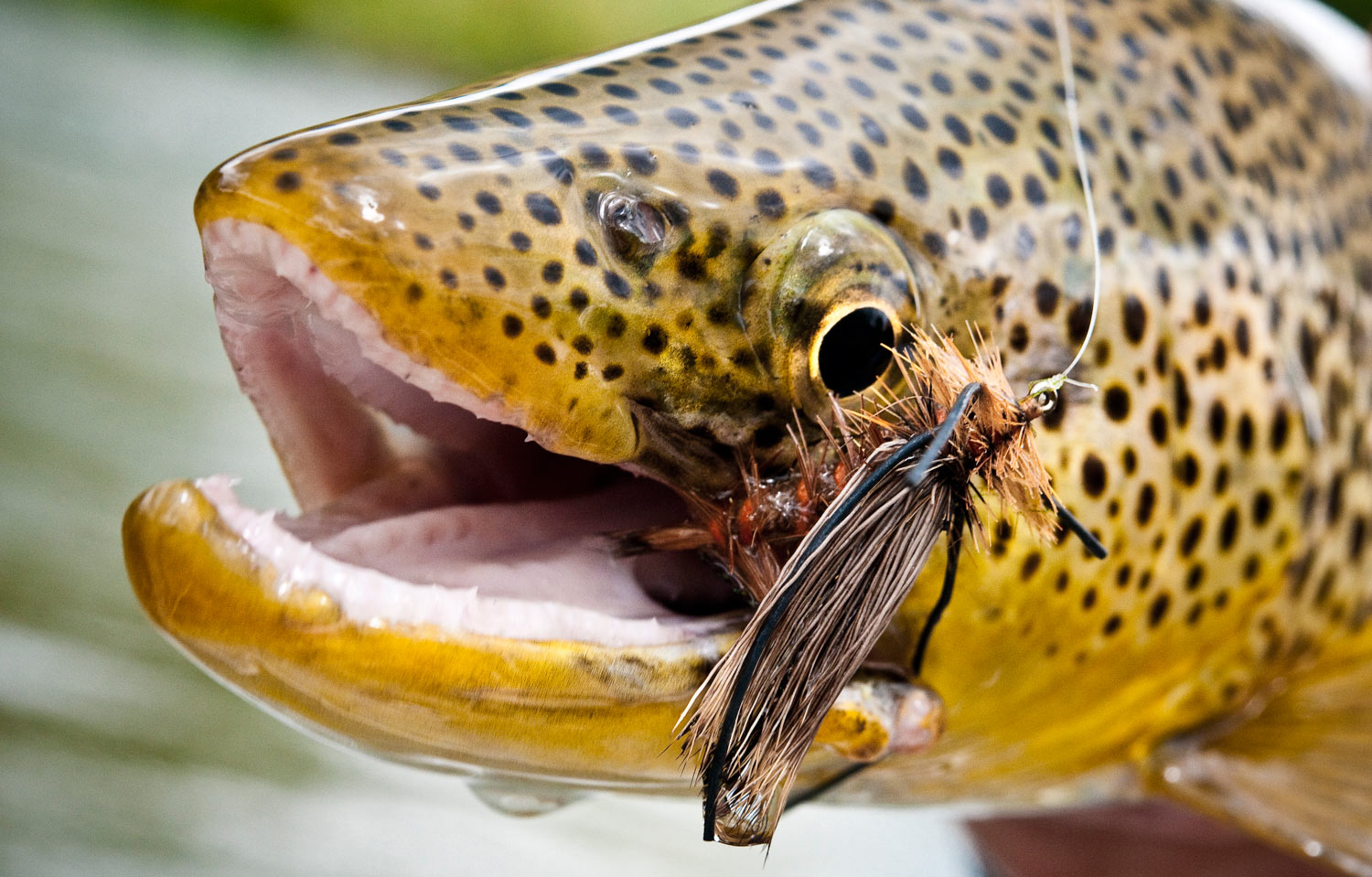
By Allen Gardner
Are you confident in your fly selection, or are you just guessing?
Most anglers open their fly box, look aimlessly at the hundreds (maybe more) of dollars of flies and make their fly selection based on their past experiences or whatever “looks good” in their box. “I did good on that one last year, guess I’ll try it out.” When is the last time you heard a guide say that?
You don’t, and it’s because they first ask the question, what are the trout eating today? Once they have a strong, educated decision, they select the fly and begin to catch loads of fish. The knowledge that helps them select the right fly quickly and more accurately is fly fishing entomology.
This article will help you understand the orders, stages, sizes and colors of 99.99% of all insects you will need to identify on the river. This is the first step in fly fishing entomology. With time you will learn to observe and identify the specific insects, and stages, which are attracting the trouts attention, but for now let’s just familiarize ourselves with the menu. We’ve put together a complete list of orders, stages, sizes and colors that are important to the fly angler.
Bookmark this page, you will refer back to if often, it’s incredibly helpful.
ORDERS AKA INSECT CATEGORIES
Let’s learn quickly what we mean by orders and stages, then we’ll show the list of insects by order, category, size and color.
Orders are just a fancy and scientific way of saying a category of insect. Remember in highschool biology when they taught Kingdom, Phylum, Class, ORDER, Family, Genus, Species? Of course you don’t, who listens in highschool biology? You should have listened though cause it relates to fly fishing!
All you really need to know is that as fly fishermen, nearly all of our fly patterns we use imitate orders of insects, not the specific species. Aside from some mayflies (Hex, Green Drakes, BWO, etc) and some stoneflies (salmonflies, yellow sallies etc), we keep it simple and only focus on the categories.
This is great news for all of us, because instead of having to remember 10,000 insect species, we just need to understand 12 or so categories. If you can identify the order of the insect, you’re more than 25% of the way to selecting the right fly.
STAGES AKA INSECT LIFECYCLES
Stages of an insect simply refer to their current stage within an insect lifecycle. Insects go through complete and incomplete metamorphsis. Complete metamorphisis includes a pupa stage while incomplete skips that step and gets on with the story.
Most insects that you need to know for trout fishing go through a larva (nymph), emerger, adult (dry), and spinner stage. We refer to these plainly as nymph, pupa, emerger, dry, spinner when fly fishing and they often correlate to fly patterns.
Not all insects have these stages, and some have an extra pupa stage, and only some of those stages apply to trout feeding behavior… it gets a bit complicated, but for now hold on to the fact that this provides a list for you to digest, not the entire subject. You’d need a fly fishing entomology course for that and is a great idea if you’re ready to take your fly fishing to the next level.
Let’s simplify and give you a framework you can use to start learning your bugs.
Read More »The Flats, Light Bottom vs. Dark Bottom
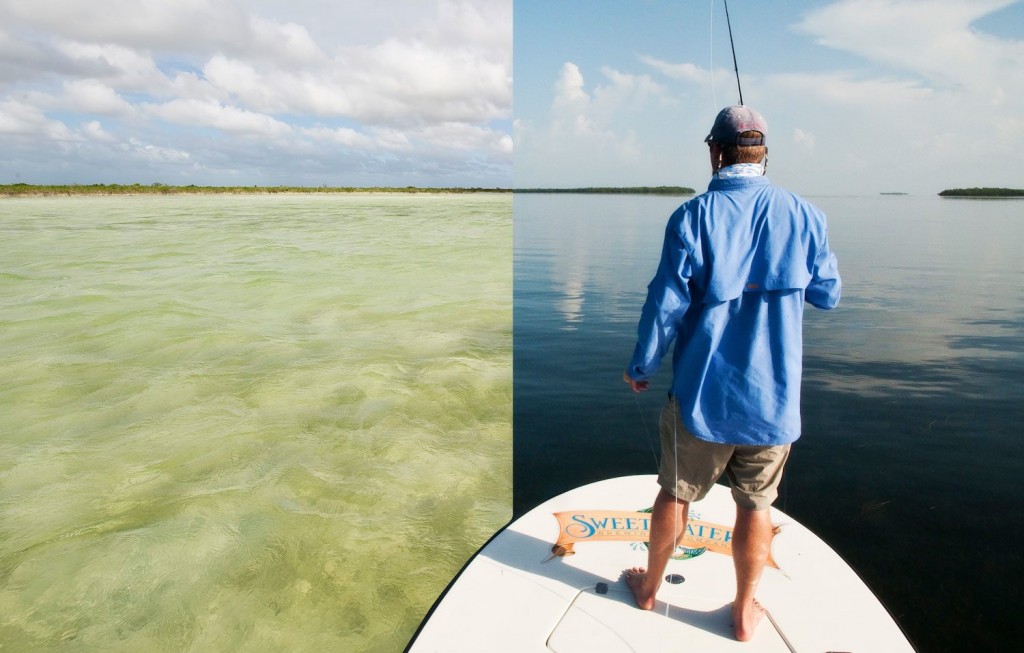
Water temperatures and seasons play an important role for fly fishermen fishing the saltwater flats.
Saltwater fish prefer to utilize different types of flats throughout the year to maximize their comfort and food intake. When I was new to the saltwater side of the sport, I never gave it much thought on why my guide was choosing to take me fishing on a light colored sandy flat, versus a grassy or dark bottom flat. It wasn’t my expertise, so I just went along with everything. Quite a few years have past since my rookie fishing days in saltwater. I’ve logged many more trips on the saltwater flats, and I’ve taken the time to pick the brains of the saltwater guides, so I could better understand why they choose one type of flat over the other during the year. Below is a quick recap of information on what I’ve gathered from numerous saltwater guides on this subject.
Fly fishing on saltwater flats is very similar to bass fishing on large reservoirs, in the fact that water temperature is critical in both for consistently locating fish and productive water. Both freshwater and saltwater fish strive to maintain stable underwater enviornments. When water conditions change, so does the habits and behavior of the game fish we’re targeting, as well as, the food sources they prey upon. Fly fisherman who understand this, are quick to match their fishing tactics with the present conditions on the water, because they know it’s critical for staying on top of the fish and in the action.
Light bottomed flats reflect a large portion of the sunlight. When water temperatures are at the extreme end of the comfort zone
Read More »Sunday Classic / When Is a Pizza Not a Pizza?

Q: WHEN IS A SLICE OF PIZZA NOT A SLICE OF PIZZA?
A: WHEN IT’S A RISING TROUT!
I got this surreal photo via text from my buddy Rob Parkins (Photographer, Fly Tyer, Fishing Guide in Victor ID). It may be my favorite fly fishing photo ever. If you don’t see the trout yet, keep looking. Once you see it, it’ll blow your mind.
Like the Virgin Marry appearing in a piece of burnt toast the pizza trout was an oman of good things to come. Three weeks later Rob joined Kent and I on the South Fork for an unexpected salmon fly hatch. It was awesome!
Check out Rob’s site rpoutside.com to see more of his photos and find out about fishing opportunities.
Read More »Saturday Shoutout / Fish Reflexes

Some interesting science from the folks at Keep ‘Em Wet.
If, like most fly anglers, you’re interested in catch-and-release fishing this study offers some new tools for assuring the survival of the fish you release. The flow chart outlines four simple tests any angler can perform that will tell you if your catch is ready to swim away.
Using these simple tools could tell you a lot about the effectiveness of your C&R practices. I’ll be trying this out next time I’m on the river and I encourage you to as well.
FISH REFLEX TESTS – A VALUABLE TOOL FOR ANGLERS
Read More »How To Catch A Trophy Brown Trout
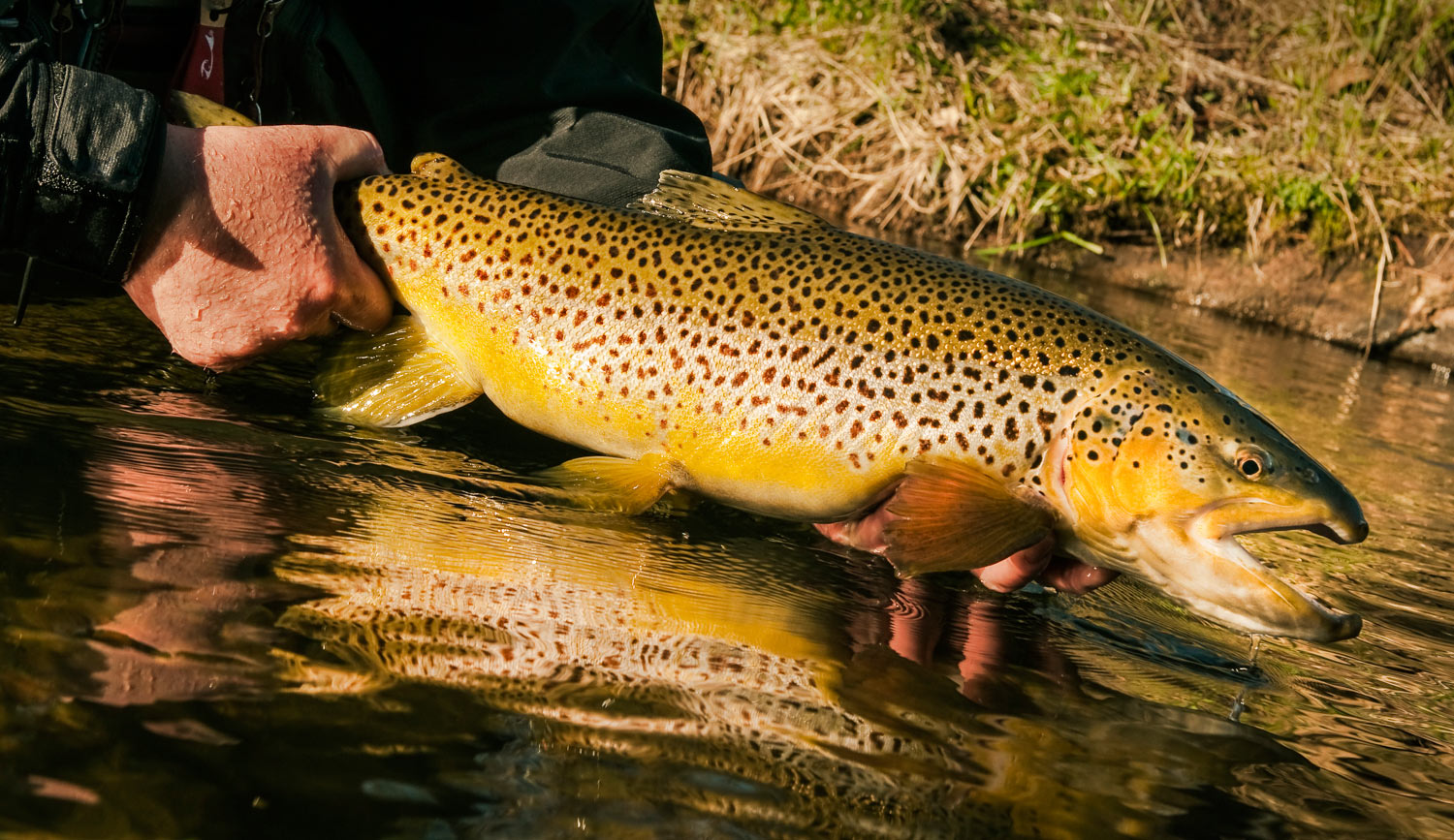
by Jason Tucker
I’ll never forget my first brown trout over 20 inches.
It was about 1:30 am after a very long float down a tiny stream. It had been a slow night with only a couple half-hearted tugs on our mouse imitations. We got down to one of the last holes with a feeding run above it and parked the boat. On my first cast the water erupted with a loud take but the fish missed. I placed my next cast where the fish had hit, made a couple of strips and let it coast. The strike was unmistakable, and I waited that extra half beat until I felt the fish before setting the hook. After a vigorous fight on my 5 weight we slid a 21-inch hook-jawed male into the net, took a couple of quick pics and let him go. It was a magical moment to be sure.
Since then I’ve caught several dozen fish over 20 inches, my biggest being over 28 inches long and about ten pounds. I’ve caught them at night and during the day by a variety of methods. That first 20+ inch fish was like flipping a switch for me. Which is why I’m surprised how often I still hear even experienced anglers express that they would love to catch a brown over 20 inches. Here’s a few tips to make that dream a reality.
KNOW THY TROUT
Brown trout have the potential to get big– really big. The world record is over forty pounds, and in lakes and reservoirs they commonly average ten to twenty pounds. In good water the only limiting factors are mortality and food abundance. River environments tend to limit brown trout growth more than lakes, but most streams will still hold good numbers of browns over twenty inches.
While young trout mostly feed on insects and larvae (think mayflies and nymphs) as they reach that magical twenty-inch mark, insects no longer serve to curb the appetite. At this point they become largely piscivorous, or fish eaters, according to researchers. While this is true, brown trout make the most of any opportunity, and this includes seasonal abundance brought about by the larger fly hatches. In midsummer they shift their diets to include mice and frogs eaten at night.
Another factor to consider is the changed social/dominance status that increasing size lends to them. Small trout have to fend for themselves as best they can, while large trout will always take up the best, most secure lies in a system, and defend them from other fish. This is often deep under a cut bank, or at the bottom of a log jam in a deep hole. As they grow larger they also prefer to feed after dark as long as available food sources permit this. You end up with a situation where smaller fish are forced to feed during the day and in positions easily fished to, while the largest fish feed only at night or in spots impossible to reach.
Don’t despair. Under the right circumstances those big fish will come out and feed. A prime example is
Read More »Fly Fishing Bass Ponds – 101
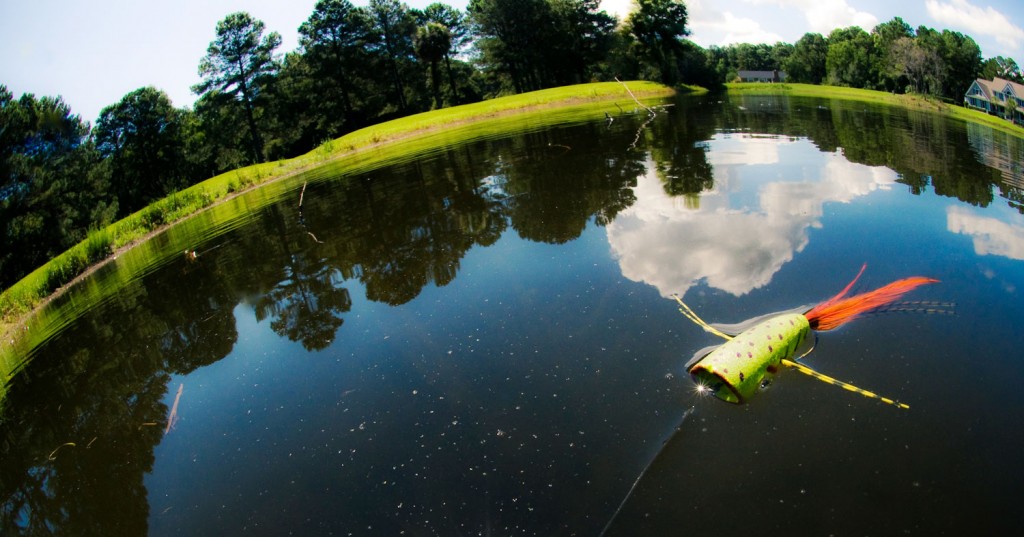
By Kent Klewein
Believe it or not, I’ve probably spent just as much time fly fishing on bass ponds in my life than I’ve spent traveling around chasing trout.
Fishing farm ponds is where I originally found my love for fly fishing. From 5th grade until I graduated high school, my daily afternoon routine consisted of dropping off my backpack, and picking up a fly rod until the dinner bell rang. I was religious about it, and many that new me may even argue I was a little OCD. Looking back on it all now, there’s a good chance I was, but it’s all good because it molded me into the angler I am today. That’s why, when I look back on those childhood memories or find myself randomly driving by one of those small 2-acre ponds, I pay my respects and give thanks.
Fly fishing for bass on ponds is a great way to get into the sport. There’s usually plenty of fish, and you always stand a good chance at catching them. One of the greatest things about ponds in my opinion, is that most of them are small enough to fish their entirety from the bank. And the smaller the piece of water you’re fishing, the easier it is to locate fish. If you don’t agree, go out on a big public lake, and you’ll quickly understand what a bonus this is for an angler.
The eight years and thousands of hours I spent fly fishing bass ponds growing up, I learned a great deal about fishing them. Below is a list of tips that I’d like to pass on in the hopes it will help others find success.
Read More »Simms Bounty Hunter Rod Cannons and Reel Case Review

When your travel plans call for checking expensive fly rods and reels, the right travel cases mean peace of mind.
Justin and I have just returned from an epic trip across Argentina. We fished and camped on the famous Limay river in Patagonia and then jetted to the mighty Parana to cheese golden dorado. Along with some amazing fishing there were six flights, as many bus rides, a few rough off-road treks and some boat travel. All of which required transporting over a dozen fly rods and reels.
Air travel rules in Argentina require that all fishing gear be checked. That’s a bit of a nail biter for most anglers. The last thing you want to happen is land in a far flung location with a stack of broken fly rods. I knew that no matter how we chose to pack our gear, we’d be putting a lot of faith in our travel cases. I did some research and decided on the Simms Bounty Hunter collection.
I bought the single hand rod cannon for six rods, the spey cannon for six rods and the medium reel case which holds four reels. I think we actually put eight rods in each cannon. Only two were spey rods and that helped. With the built-in reel case in each cannon we had storage for six reels and a couple of more went into boots or their own cases. We were loaded for bear.
Read More »